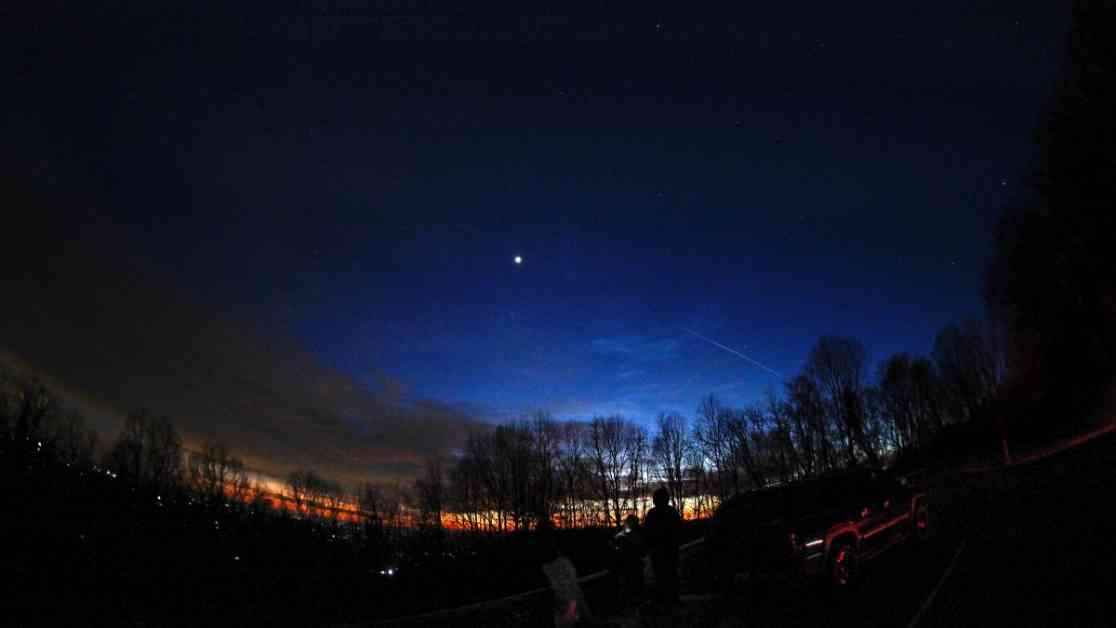A Celestial Celebration: Witness the Spectacular Planet Parade
In a dazzling display akin to a cosmic parade, the night sky is currently graced by the presence of five bright planets, offering a breathtaking sight for skywatchers throughout the month of February. With Venus, Mars, Jupiter, Saturn, and Mercury all prominently visible to the naked eye in the Northern Hemisphere, the celestial spectacle is a rare opportunity to marvel at the wonders of our solar system. For those equipped with binoculars or a telescope, Uranus and Neptune also make a cameo appearance, adding an extra layer of intrigue to the astronomical show.
The Bright Stars of the Show
Venus, the brightest of the planets, gleams proudly in the southwestern sky, casting its luminous glow for all to see. Just below Venus, Saturn makes its presence known, though its visibility gradually diminishes as the month progresses, descending lower on the horizon with each passing day. To catch a glimpse of Jupiter, look skyward in the southern direction after dusk, while Mars makes a striking appearance halfway up in the eastern sky. Mercury, often elusive due to its proximity to the sun, can also be spotted with some effort, particularly as the month draws to a close.
Jackie Faherty, an esteemed astronomer from the American Museum of Natural History, emphasizes the importance of finding a clear, unobstructed spot away from city lights to fully appreciate the celestial wonders on display. As she aptly puts it, “The nighttime sky is the original Netflix — it’s what people used to do to entertain themselves.”
The Planet Parade Unveiled
Described by NASA as a “planet parade,” this rare alignment of planets occurs due to their orbits around the sun lying in a flat, disc-shaped plane. Each planet follows its own unique orbit, resulting in a captivating celestial display where all the planets align on one side of the metaphorical racetrack. This phenomenon allows skywatchers to witness the planets positioned across the sky, akin to cars racing along different points of a track.
For astronomy enthusiasts armed with high-powered binoculars or telescopes, the elusive Uranus and Neptune can also be spotted with patience and the aid of star charts. While this month’s event offers a prime opportunity to delve into the mysteries of the cosmos, Faherty assures us that there will be future chances to witness similar planetary displays in the months and years to come.
Looking Ahead to the Stars
Beyond the current planet parade, there are other astronomical events on the horizon that promise to captivate stargazers. In late August, four planets will grace the sky simultaneously before sunrise, offering a pre-dawn spectacle worth waking up early for. Fast forward to October 2028, and five planets will align in the early morning hours, followed by another opportunity in February 2034 to witness five planets emerge after sunset.
Faherty encourages newcomers and seasoned skywatchers alike to seize these opportunities to explore the ever-changing tapestry of the night sky. “The sky is always changing a little bit,” she notes. “There’s always going to be something that surprises you.”
As we gaze skyward and witness the celestial ballet of planets in motion, let us revel in the beauty and wonder of the cosmos, a reminder of the vast mysteries that lie beyond our earthly confines. The planet parade serves as a poignant reminder of our place in the universe, inspiring awe and curiosity in equal measure.


